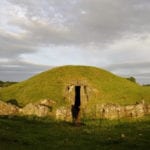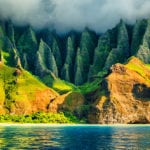 Weird Stuff
Weird Stuff  Weird Stuff
Weird Stuff  Our World
Our World 10 Ways Your Christmas Tree Is More Lit Than You Think
 Movies and TV
Movies and TV The 10 Coolest Stars to Set Sail on The Love Boat
 History
History 10 Things You Didn’t Know About the American National Anthem
 Technology
Technology Top 10 Everyday Tech Buzzwords That Hide a Darker Past
 Humans
Humans 10 Everyday Human Behaviors That Are Actually Survival Instincts
 Animals
Animals 10 Animals That Humiliated and Harmed Historical Leaders
 History
History 10 Most Influential Protests in Modern History
 Creepy
Creepy 10 More Representations of Death from Myth, Legend, and Folktale
 Technology
Technology 10 Scientific Breakthroughs of 2025 That’ll Change Everything
 Weird Stuff
Weird Stuff Ten Bizarre Facts About The Doge Meme
 Our World
Our World 10 Ways Your Christmas Tree Is More Lit Than You Think
 Movies and TV
Movies and TV The 10 Coolest Stars to Set Sail on The Love Boat
Who's Behind Listverse?

Jamie Frater
Head Editor
Jamie founded Listverse due to an insatiable desire to share fascinating, obscure, and bizarre facts. He has been a guest speaker on numerous national radio and television stations and is a five time published author.
More About Us History
History 10 Things You Didn’t Know About the American National Anthem
 Technology
Technology Top 10 Everyday Tech Buzzwords That Hide a Darker Past
 Humans
Humans 10 Everyday Human Behaviors That Are Actually Survival Instincts
 Animals
Animals 10 Animals That Humiliated and Harmed Historical Leaders
 History
History 10 Most Influential Protests in Modern History
 Creepy
Creepy 10 More Representations of Death from Myth, Legend, and Folktale
 Technology
Technology 10 Scientific Breakthroughs of 2025 That’ll Change Everything
10 Terrifying Tales From Mysterious Islands
The isolation of an island makes it a perfect place for bad things to happen. From shipwrecks to cannibalism to nuclear testing, some islands have seen nothing less than the stuff of nightmares.
10 Tiburon Island
Gold And Cannibalism
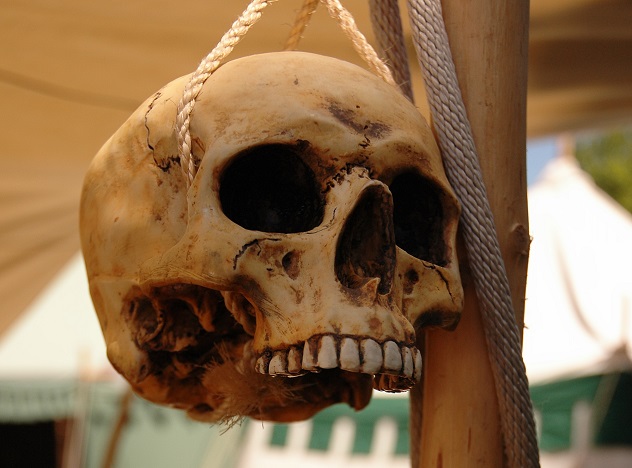
Tiburon Island is the largest island in Mexico. It’s hot, barren, filled with venomous animals, and home to a group of people called the Seri who have long been labeled as cannibals. It’s also been long reputed to contain untold riches and precious metals.
Arizona prospector Tom Grindell made his first trip to the island in 1903. At the time, when he only skirted the edges to see if it was worth mounting a full-scale prospecting operation onto the island. Deciding it was, he returned to Arizona to recruit men to help him. In the end, he was only joined by three others when he left in 1905. Traveling light—with materials to make a distillery, knowing that fresh water was going to be their scarcest commodity—they finally set off on June 10th, promising to be back by the end of July. They never returned.
Grindell’s brother, Edward, followed in September to find out what had happened to the party. When he came to the town the ill-fated prospecting party had left from, he received word from a small group of hunters that a group of Americans had been killed on the island. All that remained of them were their hands, strapped to tall stakes in the center of dance rings. The Seri were known to tie their captives to stakes or driftwood, cutting them apart little by little, eating the pieces, and watching them die.
Edward Grindell determined that the hands were from some other unfortunate party after speaking to the guide that had taken them part of the way. They had seen the hands, the guide had said, and it certainly wasn’t them. Following in his brother’s footsteps, Edward and his small party found the remains of the hands, determined to be other American miners based on the initials on the camera strap tying the hands. Edward and his party found traces of his brother—a dead mule, a rifle, and even Tom’s book—but ultimately, no bodies. The remains of Tom Grindell were found two years later—nothing more than a pile of bones identified by the handwritten letters that lay nearby.
Half a century later, a friendlier expedition was sent to the island with the goal of getting to know these supposedly ferocious people. Visitors found a kind and courteous tribe who was eager to share their way of life with visitors they thought not threatening. When asked whether or not the rumors of cannibalism were true, the response was “Well, we liked the flavor better than most game.” They went on to clarify that the Mexican government had placed restrictions on their cannibalistic activity, threatening them with death should any more island visitors mysteriously disappear.
9 Thilafushi
Rubbish Island
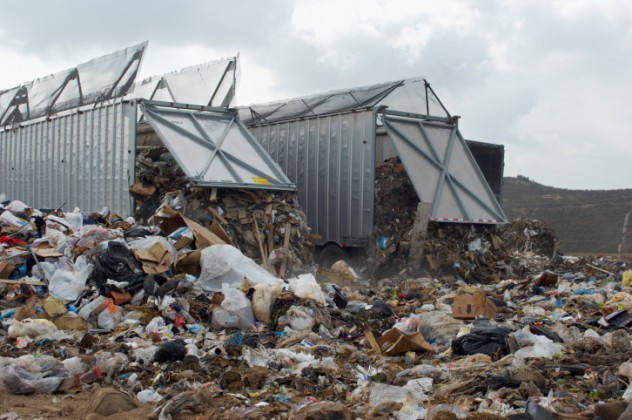
The Maldives is a tropical paradise on Earth, all white beaches and clear water. That’s the image the island nation portrays to the tourists, at least, and all those tourists don’t come without a price.
Thilafushi is a man-made island that was created as a landfill. The best of intentions may have gone along with its inception, but with more than 10,000 tourists flooding the vacation paradise every week—well, that’s a lot of trash. The so-called Rubbish Island is home to about 150 people, whose job it is to sift through the garbage and figure out what can be recycled, what can be burned, and what can be exported to other countries. But with more than 330 tons of garbage being dumped on the island every day, it’s a losing battle—and a horrifying sight that’s hidden from the tourists.
Unfortunately, the sheer amount of garbage means that workers have to be less and less discerning when it comes to what they do with the trash. Much of it is burned, and that includes electronics, batteries, and plastics, all dumping their smoky byproducts into the air and water.
8 North Brother Island
General Slocum Shipwreck
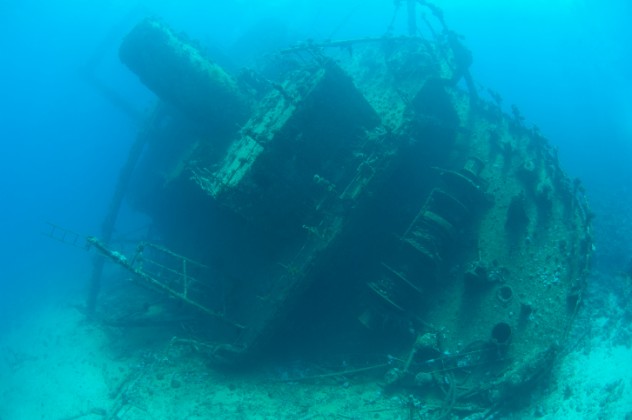
North Brother Island was the site of one of New York’s most costly human tragedies. On June 15, 1904, St. Mark’s Lutheran Evangelical Church was having their annual picnic on Eaton’s Neck. More than 1,000 congregation members boarded the steamship General Slocum to make the trip out of the Lower East Side and up to the picnic grounds. Many were women and children, all were dressed in their Sunday best.
As the ship made its way up the East River, it was engulfed in flames within a half hour of leaving its port. The burning ship was run aground on North Brother Island, deemed by its captain to be the best choice out of a number of poor ones—that part of the river was lined with lumber yards and gas mills, making no easy choice for the beleaguered captain. That morning, 1,358 passengers boarded the ship, and 1,021 of them perished. To put that in perspective, the only larger single-disaster death toll in the history of the United States was the World Trade Center attacks.
Bodies from the wreckage washed up on shore on North Brother Island, where they were laid out along the pier and shoreline. It was a tragic scene, and families wandered among the hundreds of charred, drowned bodies searching for their loved ones. Later, the captain would be tried and convicted when it was found numerous safety measures and devices had been overlooked on the ship. Fire hoses were rotted, lifeboats had been wired in place, and even the life vests were decayed to the point of uselessness, dragging poor souls beneath the river when they jumped from the burning boat.
7 Gruinard Island
Anthrax Testing
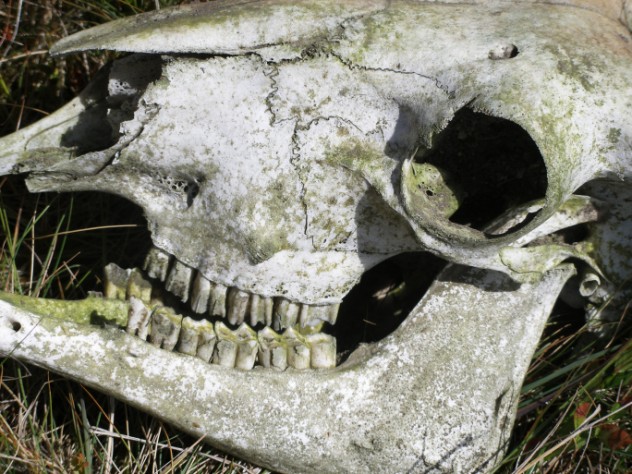
In 1942, the British government decided that the Axis powers shouldn’t have all the deadly toys and began experimenting with anthrax. They needed someplace to conduct experiments, so they headed north to an island only a few hundred meters off the coast of Scotland.
Gruinard Island was home to only a handful of people and one small, beautiful rural town in the late 1800s. As they had largely moved on by the 1930s, it was decided that this small island was the perfect place to test the distribution and effects of anthrax. That meant taking a small herd of about 60 sheep to the island and then dropping an anthrax bomb on them. Not surprisingly, the sheep died.
Several bombs were dropped on the island in 1942 and 1943, and at the time, no one really protested. It was all a part of the war effort, after all, and what better cause was there at the time? The real problems came after. In 1945, the owner of Gruinard Island wanted his land back, but the Ministry of Supply deemed it unfit for human or animal habitation. They did, however, rule that the owner—or his beneficiaries, a telling clause that suggested just how long the cleanup was going to take—would be able to buy the island back from the government once it was clean for a sum of £500.
More problems started happening when anthrax-infected corpses began washing up on the mainland of Scotland, infecting other animals. The government never told the residents of the nearby mainland what they were doing, either. For those that lived through it, it was originally great fun watching these new military maneuvers only a handful of meters away. The island was cleaned up by the somewhat questionable practice of spraying it with a mix of water and formaldehyde to kill all the spores. Sadly, once it was given the all-clear that it was safe again for habitation, another proposal was lobbed in the island’s direction: making it a nuclear waste dump.
6 San Servolo
Insane Asylum

The island of San Servolo is located off the coast of Italy. Today, its primary function is housing a museum to its rather disturbing past. The museum used to be hospital that was founded in the 18th century and was first designated to serve wounded military troops. By the first part of the 19th century, however, it had become a “morocomio,” or a institution for the insane.
Interestingly, the asylum was a religious facility, under the management of an ancient religious order known as San Giovanni di Dio, an order long known for its medical expertise. One of the key methods of treatment for their insane patients was absolute isolation and repression, which made the island setting perfect. The order taught the practice of what they called “moral treatment,” which included practices that border on brutal by today’s standards.
The museum features displays of restraint devices like chains, straight jackets, and handcuffs, all of which were used on the patients. Electroshock therapy was also used, alongside other methods like open dialogue between patients and physicians. Perhaps even more unsettling than the outright horror of other institutions of the time is the bizarre coexistence of violence and repression with modern therapy techniques like counseling and massage.
5 Brown’s Island
Civil War Tragedy
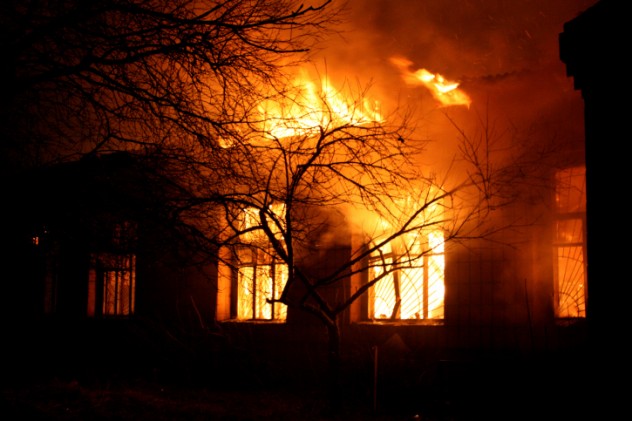
Early munitions labs were dangerous places, and part of the tragedy of the events on Brown’s Island was that they were on an island in the first place just because of the danger of something like this happening. In 1863, a series of wooden buildings were constructed on the newly cleared Brown’s Island. They were to house a Confederate munitions lab, deemed too dangerous to be placed in more populated areas of mainland Virginia.
On March 13, 1863, the inevitable—and unthinkable—happened. A teenage Irish immigrant named Mary Ryan was in the center of an explosion that rocked the Brown’s Island munitions factory, sweeping through buildings that were mostly populated by women and children. Ryan made a simple but fateful mistake—banging a wooden board holding friction primers against a table to try to knock some of them loose.
The explosion destroyed most of the building, which was occupied by somewhere between 80–100 young women. In the end, 44 had died, but few had died quickly. More suffered from blindness and severe burns. Mary Ryan herself lingered for several days, before finally succumbing to her wounds on March 16 after confessing responsibility for the disaster.
The ultimate cause of the tragedy was a combination of 200,000 musket caps, 3,000 friction primers, 11 pounds of gunpowder, and the presence of gunpowder dust in the air, created by girls who were disassembling faulty cartridges to salvage materials. Work resumed in the plant by the end of March, with workers lining up to fill the new vacancies.
4 Solovki
Religion And Gulags
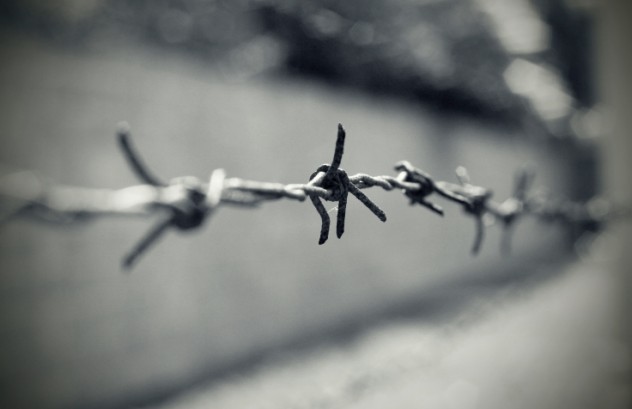
Throughout the 15th and 16th centuries, the monastery and settlements on Solovki were inhabited by monks who chronicled their daily lives, who made salt, who chopped firewood. It’s not known whether or not the monks were actually the first or only settlers on the island—although their texts would lead readers to believe so, others claim this is just a way for the monks to establish their ownership of the islands.
Slowly, the island was converted into a prison colony, which then became a Soviet gulag. The first people were exiled to the island for crimes like treason, blasphemy, theft, and being a vagabond. Prisoners were detained in the buildings that had once housed the monastery, and the monks that still lived on the island were suddenly tasked with becoming prison wardens as well. More than 400 prisoners were sent to the island by Ivan the Terrible, and by 1798, more prison-specific structures were beginning to be built.
Later, the prison became a concentration camp, housing those that were deemed problematic during Russia’s Civil War. In 1923, it became known as a camp of Special Destination. That was the same year that massive military executions were begun, and more than 2,000 people were killed on the island in 1937 alone. Prisoners describe horrific conditions—guards using sea hooks to drag dead, frozen bodies out of the camps for disposal while prisoners fought to keep them for food. Conditions were unbearable, guards were sadistic, and the work was menial, pointless and back-breaking.
3 Cactus Dome
Nuclear Containment
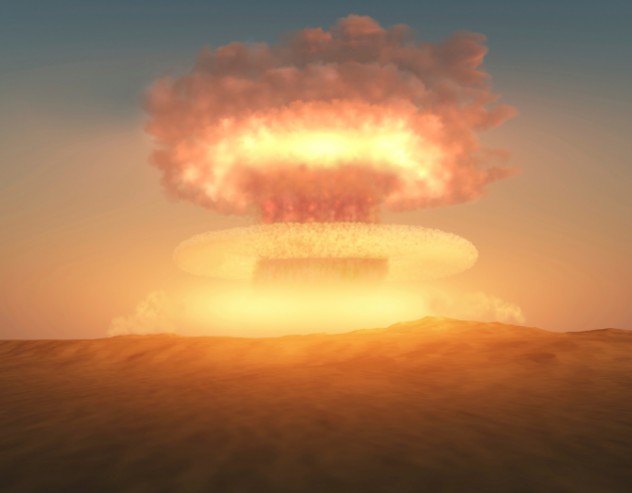
The Enewetak coral atoll is a breathtaking ring of tropical islands in the Pacific Ocean. There are fewer islands than there were before World War II, however, as all indigenous peoples were relocated so the US Government could turn the string of paradise islands into a nuclear testing ground.
Following the first nuclear tests on Bikini Atoll in 1946, everyone on Enewetak Atoll was relocated to Ujelang Atoll. Operation Sandstone began in 1948, and over the next decade, a total of 43 nuclear weapons were detonated on the island chain. One of these, codenamed Ivy Mike, was 500 times larger than the bomb that was ultimately dropped on Hiroshima. It completely demolished the island of Elugelab, leaving absolutely nothing left of the island save a 1-kilometer (0.6-mi) crater. The same explosion created two new plutonium isotopes and resulted in the discovery of two new heavy elements. It also left the islands and surrounding waters highly contaminated by fallout and absolutely uninhabitable.
Inhabitants were relocated back to the islands beginning in the 1970s, but it was only in 1979 that decontamination efforts really got underway. These efforts included digging up all the contaminated soil, mixing it with concrete, dumping it into one of the craters left behind by the explosions, and finally covering the 8-meter (25-ft) pile of radioactive sludge with a concrete dome. As of 2008, numerous cracks have been found in the dome.
2 Nazino Island
Russian Settlement

Nazino Island is a desolate, all but uninhabitable river island 2,400 kilometers (1,491 mi) northeast of Moscow. It was to this island that 6,200 people deemed unworthy by the Russian government were exiled in 1933. There were 50,000 people total that were involved in the re-homing program, mostly criminals, those without proper Soviet citizenship papers, and the unemployed. Most were left in Tomsk, Siberia, save the unlucky 6,200 that were moved to what would become known as Cannibal Island.
They were given no utensils, no tools, and no supplies. Their only food ration was a supply of raw flour that was dumped on the shoreline, causing a panicked stampede in the rush to get to it. The only water was contaminated river water, and those who drank it were subject to dysentery. Those who tried to flee the island were shot by guards, whether they were men, women, or children. The handful of people who survived their time on the island remember corpses littering the ground, human flesh cut from the bodies and saved to eat later.
Originally, Nazino was meant to be a brief stopover on the way to another settlement. It lasted a month, but cannibalism started about 10 days into the ordeal. One survivor recounts seeing a young girl tied to a tree and cut to pieces by starving prisoners. The plan had been approved by Stalin and was the culmination of a 3-year directive to cleanse Russian streets of undesirables.
1Sorok Island
Korea’s Leper Colony
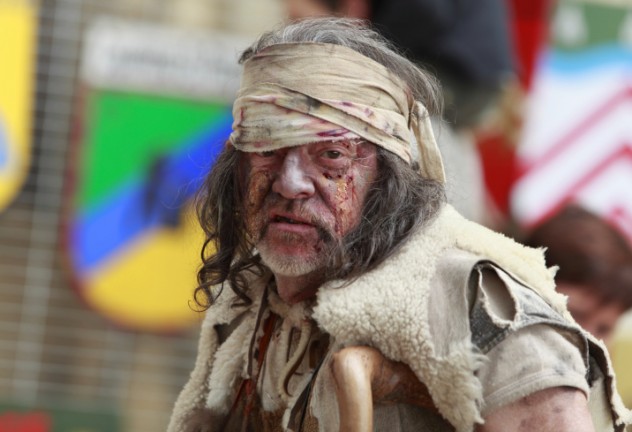
Park Sun-ji was working on his South Jeolla farm in Korea when authorities picked him up and put him on the boat bound for exile on Sorok Island. His first task when he was there was to clean the operating room. It was covered with blood and held an operating table fitted with restraints. He had been reported to Japanese authorities as a leper and was one of many that were exiled to the breathtakingly beautiful island off the south coast of Korea.
The island’s beautiful beaches hide a dark past, though, and no amount of beauty can truly hide the blood and the tears. Sorok Island was a leper colony for more than 100 years, first run by the Japanese. Things didn’t get any better when control passed back to Korea, either. Those exiled there were less patients and more detainees, forced into long days of back-breaking physical labor and subjected to beatings if they didn’t perform as desired. Some were left untreated, as doctors wanted to study the natural progression of the disease. Others were sterilized, and those that were allowed to marry and have children were forced to give them up and send them to the mainland before they had reached school age. Those whose pregnancies were not approved were forced to submit to abortions.
The island had been under the control of a number of overseers. One was known for his kindness, but he was the exception rather than the rule. Another forced residents to bow before a statue of him each morning before they could eat. He was stabbed to death in 1942, and his killer was executed.
Now, a bridge connects the island with the mainland, but there’s still a stigma attached to those who live there. Even though they have since been cured of the disease, many are still left disfigured by its effects and by the years of neglect. Residents originally sent to the island as young men and women were in their 80s during the building and opening of the bridge in 2007, and the paranoia and disgust they see on the faces of those from the mainland are just as bad as the treatment they once received from the doctors who became their captors.
